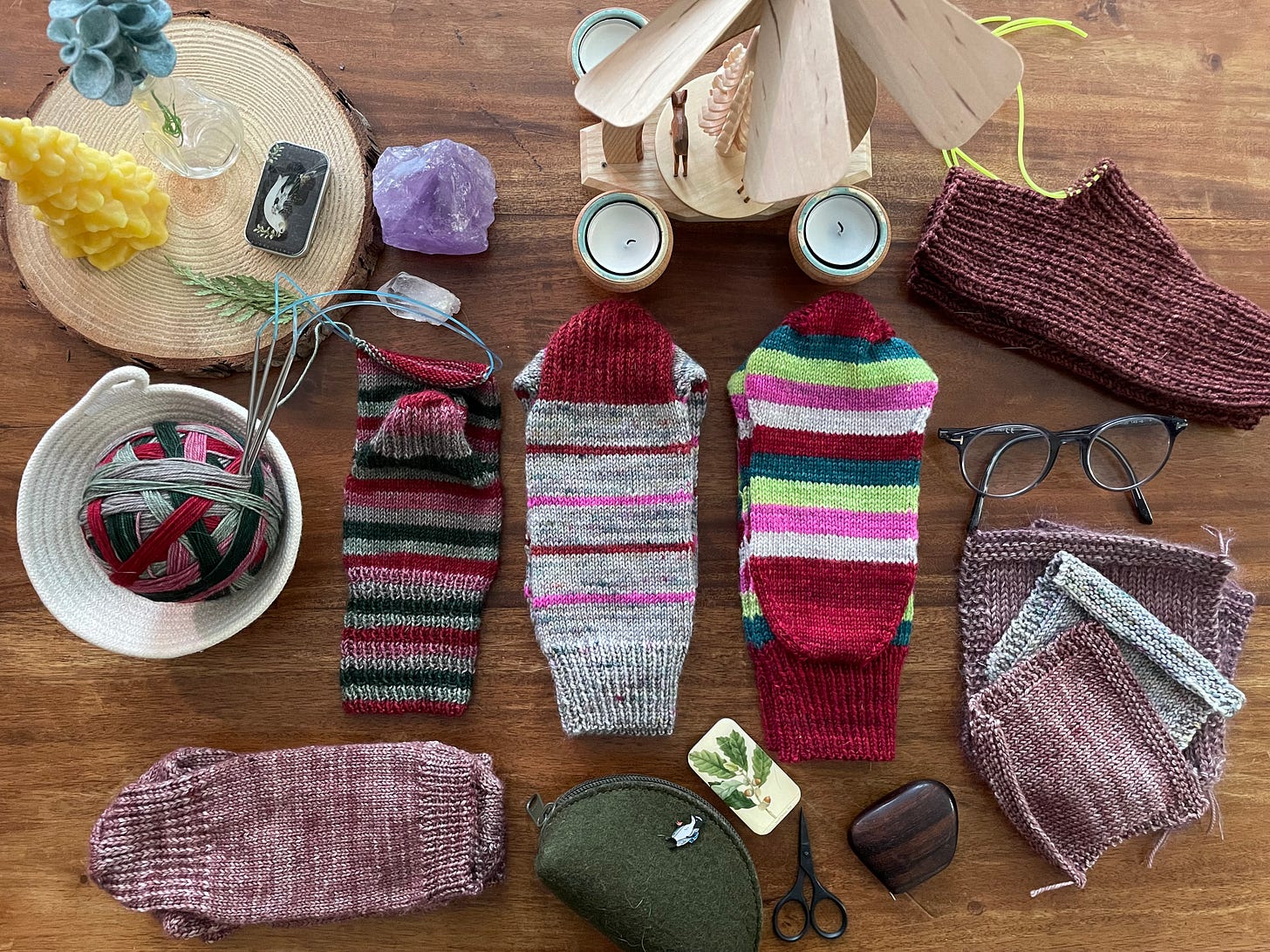
I recently saw a post online from a new knitter who was asking how to make her knitted fabric look better. The picture she shared was a really common view of new knitting: slightly uneven stitches, twisted in some places, an edging that was floppy in some spots and overly tight in others. In other words: her knitting was perfectly normal for a new knitter.
The answer to this knitter was to practice. Simply, to knit more.
I’ve been knitting so long I don’t even remember learning how to knit. It’s like my fingers and hands just always knew. I don’t remember having wonky tension issues like this new knitter had, but I’m sure I did. Everyone does when they’re learning how to knit.
A sweater designer I know, Jen Parroccini, offers a line of advice on many of her patterns that a skill prerequisite is being able to knit with consistent tension.
This is because knitting is a skill that gets better with practice. The more you knit, the more consistent your tension becomes, and the better knitted fabric you can produce.
It’s been years since I consistently knitted socks. My sock drawer has been full, and I’ve been interested in adding sweaters to my wardrobe. But, from the time I knit my first sock in 2013 to now, I’ve knit more than a hundred pair of socks. So, when I realized that many of the socks in my sock drawer are vintage 2018 and earlier, and that they are developing holes and very thin spots, I decided it was time to dedicate some knitting time to restocking my sock drawer.
When I picked up my sock needles, all that sock knitting practice came right back to me.
My yarn tension was just right, and my sock fabric was suitably dense. I’ve knit 3 full pairs of socks since early December and have just started a 4th pair. My sock drawer feels nicely full again, and the discipline of knitting has done its job for me. I have been able to feel a sense of accomplishment and movement over this winter season, a time when short days and long nights can be enervating and just tiring.
Like knitting, hope is a discipline, too.
When I read the news, or think about the incoming presidential administration here in the U.S., there doesn’t feel a whole lot to be hopeful for. But knitting reminds me that while hard times and bad news is true, it isn’t always all of the truth. Hope is here, too. My in-box is full of newsletters of other writers and thinkers and makers who are practicing hope, reaching out to others, building community, being gender-inclusive, doing their part toward climate justice, and speaking truth to power. This is hope in action.
We knitters and crocheters and yarn crafters know about hope in action.
Hope is something you practice, day after day, stitch after stitch, until it becomes second nature. Sometimes we need to rip out our knitting because something just isn’t working. But we know this is a setback, not the end.
Hope is what we practice when we hold fast to our belief in better days ahead—no matter what is happening in the news, on social media, or even in the halls of government.
Hope is what we practice when we knit.





People often comment on my IG or DM me asking how I have such beautiful tension, and they hate it when I say, “Knit a lot.” Truly, you have to knit a lot and pay attention.
Thank you for reminding us that bad news "isn't always all the truth." That's such an important statement, and thanks for this space to be reminded of that.
I find that I am focused on sweaters and larger garments these days, in an effort to create more of my wardrobe with things I make for myself (influenced by some of your past posts on the topic). I have never knitted socks. I might get there in an effort to find ways to use up remaining bits in my stash. If you have any stash-busting suggestions, I'd love to hear them!